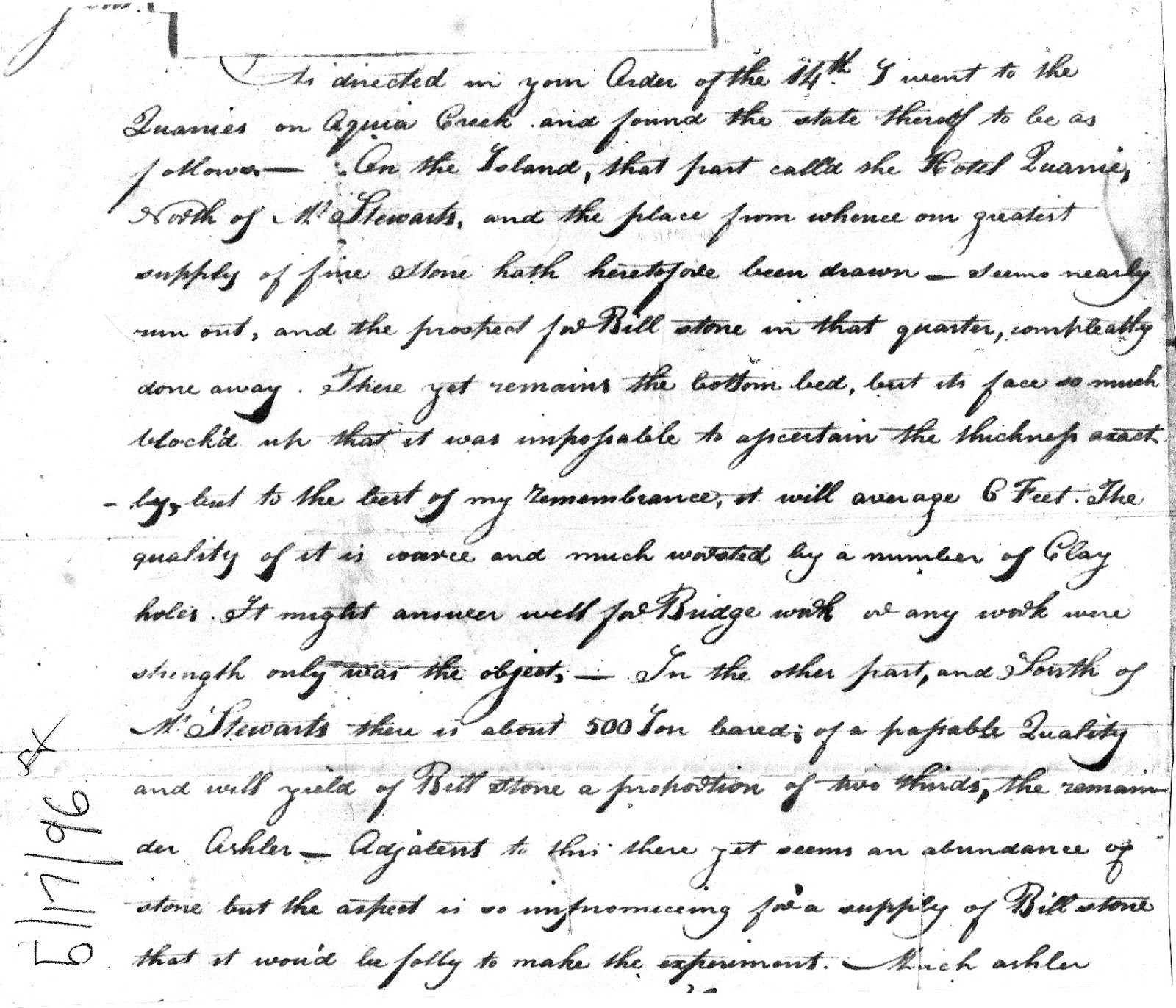"To meet the demand for more stone, the sons of Virginia plantation owners gave way to stonecutters who actually knew the business."
Quote from Slave Labor in the Capital, page 73
By 1798 the quarrying operations at Aquia had grown and the two letters below show how the stone cutters involved responded to the crisis when a ship with 40 tons of stone sank in Aquia creek. There is no mention of hired slaves in either letter. But the letters describe the crisis at the Brent quarry. The stone in the sunken ship had to off loaded and the ship raised. To get more stone from the quarry a layer of soil had to be removed. It is hard not to picture slaves doing such hard menial work. This was a quarry operated by the Brent family that had long owned slaves in Virginia.
However, the letters also reveal a network of British stone cutters who seemed to have effectively taken charge of stone operations. From payrolls we know the David Ogilvy and George Blagdin (usually spelled "Blagden") were doing stone work at the White House in December 1794. I think Richardson was one of the White House stone cutters lured to Aquia in 1793. Richardson seemed eager to save the day promising to get out the stone needed in Washington from his neighboring quarry. This possibly is when Richardson's quarry became the primary source of sandstone for the Capitol. In my book I quote Benjamin Latrobe's 1806 description of how sandstone was quarried. He was at the Richardson quarry checking on the stone deliveries he needed to continue work on the south wing of the Capitol.
Of course, neither of my books goes into great depth about the quarry operations. I share these letters to show that there is much information in the records, though little explicit about race and the work force at the quarries.






No comments:
Post a Comment